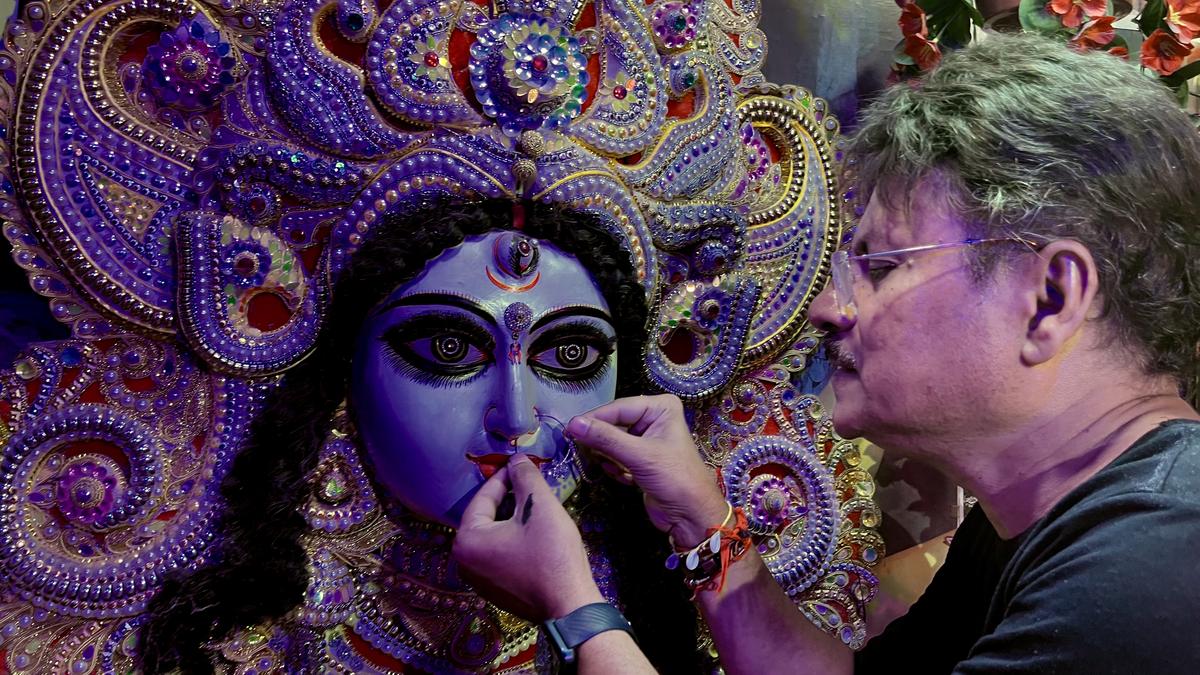Calcutta University scholars interacting with Sadri community
| Photo Credit: Special Arrangement
A group of scholars from the University of Calcutta recently visited a village in the Sundarbans in a bid to save a language that is on the verge of extinction. They went to a settlement called Kamarpara in Gosaba subdivision of South 24 Parganas to begin translation into the English of a novel written by a local in a tribal language called Sadri, and also to spend time with members of the Sadri community.
The novel — titled Baman Burir Char (‘Dwarf Old Lady’s Char’), with char meaning emerging riverine islands — has been authored by Dayalhari Sardar, who is an Assistant Professor of Bengali at nearby Bhangor Mahavidyalaya.
“I would say it is the author who is actually saving the language. But language and literature are not just about the scripts and words — they carry with them culture, tradition, politics, society, struggles and much more. So, by translating it into English and opening it up to a global audience, we’re essentially introducing the world to their world. It helps build an identity and also creates opportunities for pedagogy,” Shreya Datta, one of the four scholars who visited the village, said.
According to her, the idea behind spending a day with the community earlier this month was to understand the “geography of the literature” on which the Sadri novel is based.
Ayan Ghosh, another member of the team, said there were 741,528 Sadri speakers in West Bengal as per the 2011 linguistic census, a majority of them being concentrated in the northern part of Bengal, primarily among tea plantation workers — descendants of labourers brought by the British during the colonial period.
“In contrast, only a small number of Sadri speakers were brought to the Sundarbans region, primarily from present-day Chhattisgarh, to clear the dense forest and prepare the land for cultivation. The descendants of those labourers are the present-day Sadri-speaking community that we visited,” he said.
Sadri does not have a script; members of the community living in West Bengal write in the Bengali script and those belonging to Chhattisgarh use Devnagari.
“The novel is about the Sadri life of Sunderbans, especially char lands, river erosion, loss of land, vulnerability of people’s life there. The author is happy that his novel is being translated into English. We have been engaged with this kind of work since the last few years. In 2022, I organised a workshop called ‘Translating Sundarbans’. This translation is the result of that workshop,” Mrinmoy Pramanick, a University of Calcutta Professor who led the team, said.
Team members said that reaching Kamarpara was quite a task. After taking a train to Canning, they boarded an autorickshaw to Kotrakhali, a journey of 40 minutes, and from there crossed the river by boat to reach the Gopalkata ferry ghat, where villagers came to pick them up on motorbikes. “The village is surrounded by waterways that isolate it from essential services, particularly healthcare facilities. Communication with the outside world becomes virtually impossible after nightfall,” Sudeshna Ghose, a project fellow, said.
Published – April 22, 2025 02:52 am IST






